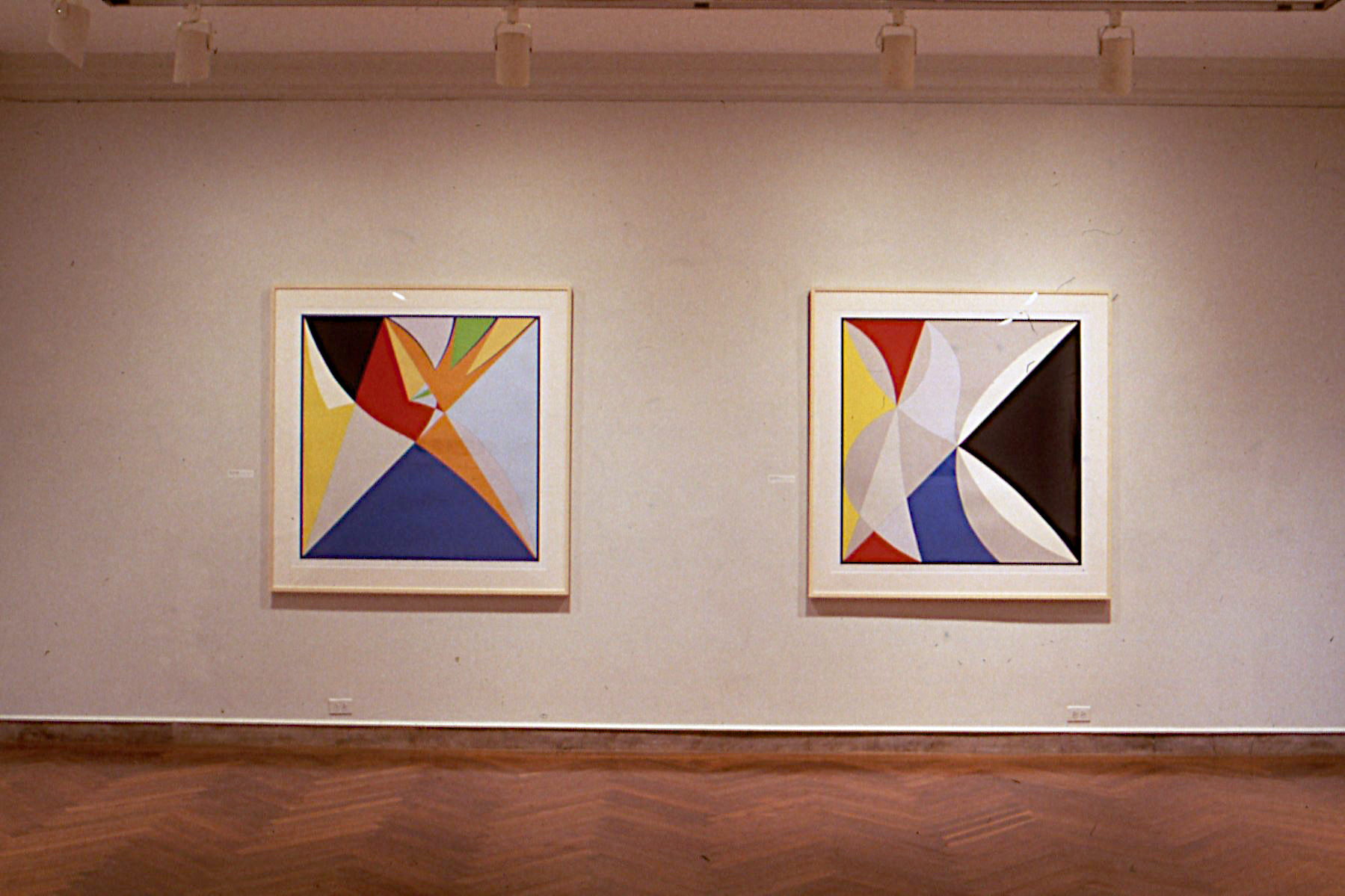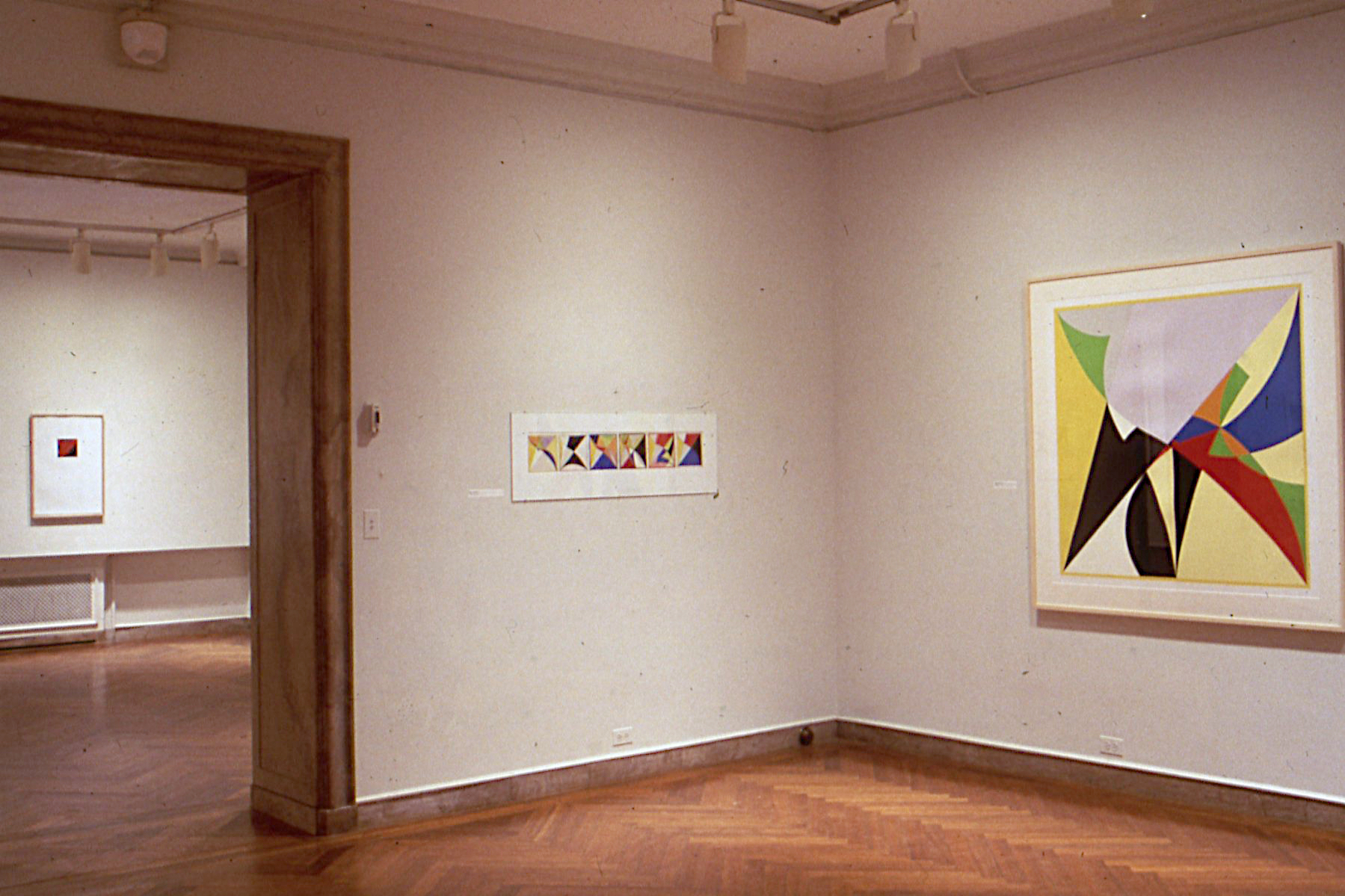Prints, 1980s
Addison Gallery, Andover, MA, 1987
West Beach Cafe, Venice, CA, 1985
Camellia and David Sullivan made these prints, later I showed paintings with them but they stopped making prints which is a pity as we may have made more. I think that the arcing movements out of which the prints are made are to me the curved version of what straight lines that are oblique to the horizontal or vertical do, they automatically make the surface of the painting be a space with something happening in it.
They are best seen as a group as there is a sequence, given in the group’s title, which takes one through the six with a view to using the six colors they all contain (the primaries plus black and white and grey) differently. I think prints are an opportunity to do something with color that can be very intense while at the same time utterly even. Their thinness also lends itself to movement that is very light, or so it seems to me. The prints are related to Triumph and other paintings made around the mid eighties. They all in their different ways poke around with the relationship between painting and the pictorial, which I think I should nowadays describe as a problem of how the work is going to be there, but which then I saw as a series of options for an irreducible interdependence of two different things and sensations, the work as a space filled with or made out of movement, and the work as a thing. I understand that for everyone how the work is made can bridge the two, for example, ‘the paint is very impacted’ describes what it looks like and also something about how it was put there. And when you work with printers you have to think about paper, which reminds one of how in the Renaissance they thought panel best for architectural subjects, but linen best for portraits because its weave caused the light to flicker on the surface and reinforce the sense of a living face. But beyond such things it’s not so clear. I think one usually looks into prints because they’re on paper and small, so I wanted to make them bigger than usual to see how paper worked then. I think it helps them to be complicated in a simple and clear way, which I guess is what prints can be in my opinion, in a way paintings can’t because painting can’t come down to a straightforward process unless one is boring. Making prints makes you do things in a wholly unnatural way that is very helpful to the rest of one’s thinking.













